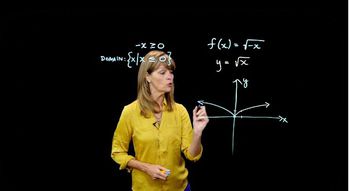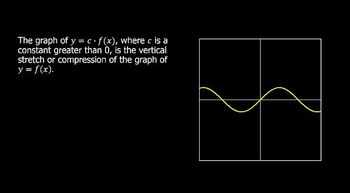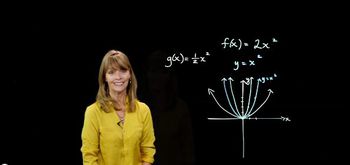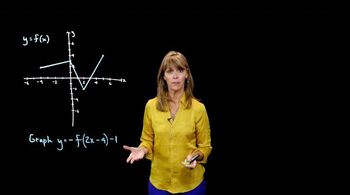Table of contents
- 0. Review of Algebra4h 16m
- 1. Equations & Inequalities3h 18m
- 2. Graphs of Equations43m
- 3. Functions2h 17m
- 4. Polynomial Functions1h 44m
- 5. Rational Functions1h 23m
- 6. Exponential & Logarithmic Functions2h 28m
- 7. Systems of Equations & Matrices4h 6m
- 8. Conic Sections2h 23m
- 9. Sequences, Series, & Induction1h 19m
- 10. Combinatorics & Probability1h 45m
3. Functions
Transformations
Problem 28
Textbook Question
In Exercises 17-32, use the graph of y = f(x) to graph each function g. 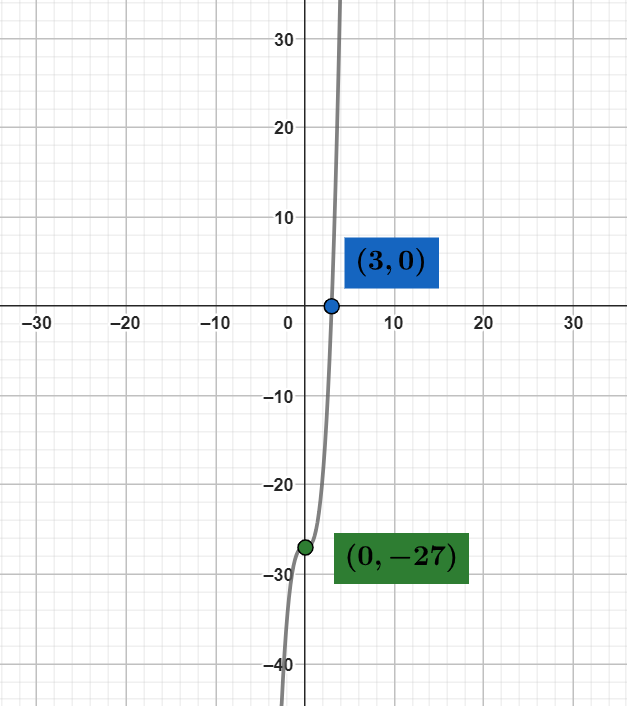
g(x) = ½ f(x)
 Verified step by step guidance
Verified step by step guidance1
Identify the given function: The graph provided is of the function y = f(x).
Understand the transformation: The function g(x) = \frac{1}{2}f(x) represents a vertical compression of the graph of f(x) by a factor of \frac{1}{2}.
Apply the transformation to key points: For each point (x, y) on the graph of f(x), the corresponding point on the graph of g(x) will be (x, \frac{1}{2}y).
Transform the given points: For the point (3, 0) on f(x), the corresponding point on g(x) is (3, \frac{1}{2} \times 0) = (3, 0). For the point (0, -27) on f(x), the corresponding point on g(x) is (0, \frac{1}{2} \times -27) = (0, -13.5).
Sketch the graph of g(x): Plot the transformed points and draw the graph of g(x) = \frac{1}{2}f(x) using the same shape as f(x) but vertically compressed.
Recommended similar problem, with video answer:
 Verified Solution
Verified SolutionThis video solution was recommended by our tutors as helpful for the problem above
Video duration:
2mPlay a video:
Was this helpful?
Key Concepts
Here are the essential concepts you must grasp in order to answer the question correctly.
Function Transformation
Function transformation refers to the process of altering the graph of a function through various operations, such as vertical or horizontal shifts, stretches, or reflections. In this case, the function g(x) = ½ f(x) represents a vertical compression of the original function f(x) by a factor of ½, meaning that all y-values of f(x) are halved.
Recommended video:

Domain & Range of Transformed Functions
Graphing Functions
Graphing functions involves plotting points on a coordinate plane to visually represent the relationship between the input (x) and output (y) values of a function. Understanding how to read and interpret the graph of f(x) is essential for accurately graphing g(x), as it allows one to apply the transformation rules effectively.
Recommended video:

Graphs of Logarithmic Functions
Key Points on a Graph
Key points on a graph, such as intercepts and turning points, are critical for understanding the behavior of a function. In the provided graph, the points (3, 0) and (0, -27) are significant as they indicate where the function intersects the axes. These points will also be transformed when graphing g(x), helping to maintain the overall shape of the function while applying the vertical compression.
Recommended video:
Guided course

Graphing Equations of Two Variables by Plotting Points

 5:25m
5:25mWatch next
Master Intro to Transformations with a bite sized video explanation from Nick Kaneko
Start learningRelated Videos
Related Practice














